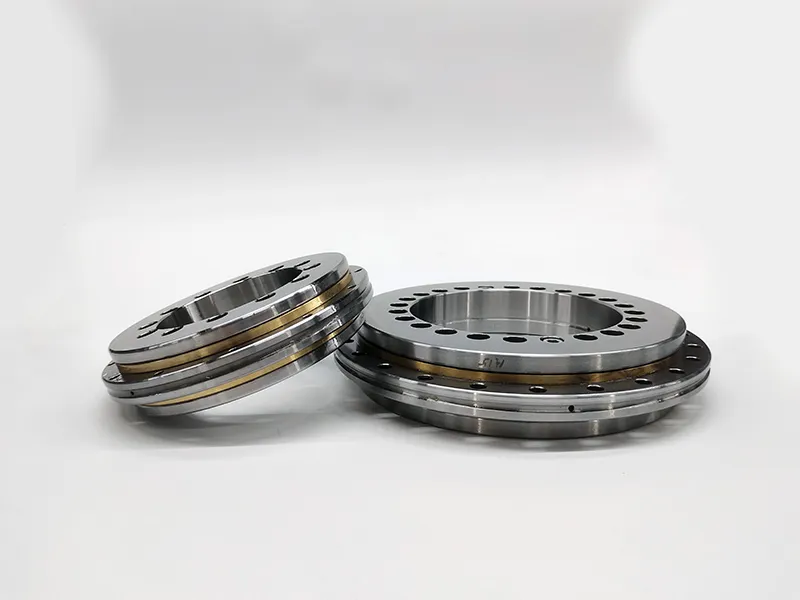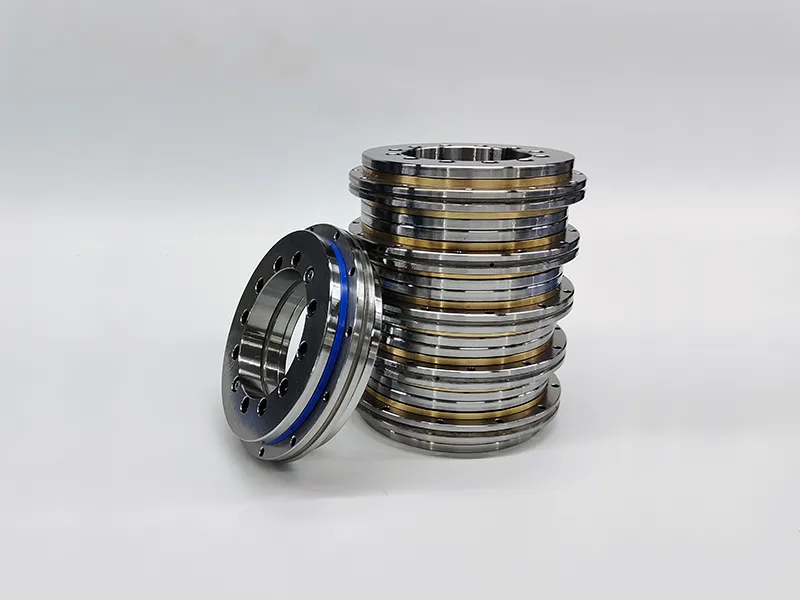Rotary bearings, including ball bearings and roller bearings, undergo heat treatment processes to enhance their mechanical properties and ensure optimal performance. The heat treatment process for rotary bearings typically involves the following key steps.

The initial step in the heat treatment process is often annealing, which involves heating the bearing components (rings, rollers, and cages) to a specific temperature and then slowly cooling them. This process relieves internal stresses and softens the material, making it more suitable for subsequent machining operations.
Normalizing is a heat treatment process that involves heating the bearings to a temperature above the critical range, followed by air cooling. This process refines the grain structure of the material, improving its mechanical properties and uniformity.
Quenching is a critical step that imparts hardness to the bearing components. The bearings are rapidly cooled by immersing them in a quenching medium, such as oil or water, to achieve the desired hardness. The specific quenching process and medium depend on the type of bearing and the material being used.
Following quenching, the bearings may be tempered to reduce the brittleness that results from the high hardness achieved during quenching. The tempering process involves reheating the bearings to a lower temperature and then allowing them to cool slowly. This imparts the desired balance between hardness and toughness.

In some cases, particularly for certain types of bearings, surface hardening processes such as induction hardening or case hardening may be employed to increase the hardness of the bearing's outer surfaces while maintaining a more ductile core.
After heat treatment, the bearing components undergo precision grinding and superfinishing to achieve the required tolerances, surface finish, and geometric accuracy. This step is crucial for ensuring smooth operation and reducing friction.
Bearings are thoroughly cleaned to remove any residual contaminants from the heat treatment process. Subsequently, they undergo inspection to ensure they meet the required quality standards.
Some bearings may undergo additional processes like coating to enhance corrosion resistance or provide lubrication properties. For example, anti-corrosion coatings or thin film lubrication coatings may be applied.
It's important to note that the specific heat treatment processes can vary based on the type of bearing, the materials used, and the intended application. Additionally, advancements in metallurgy and manufacturing technologies may lead to variations in heat treatment processes to optimize performance and efficiency. Manufacturers adhere to strict quality control measures to produce bearings with consistent and reliable properties.
